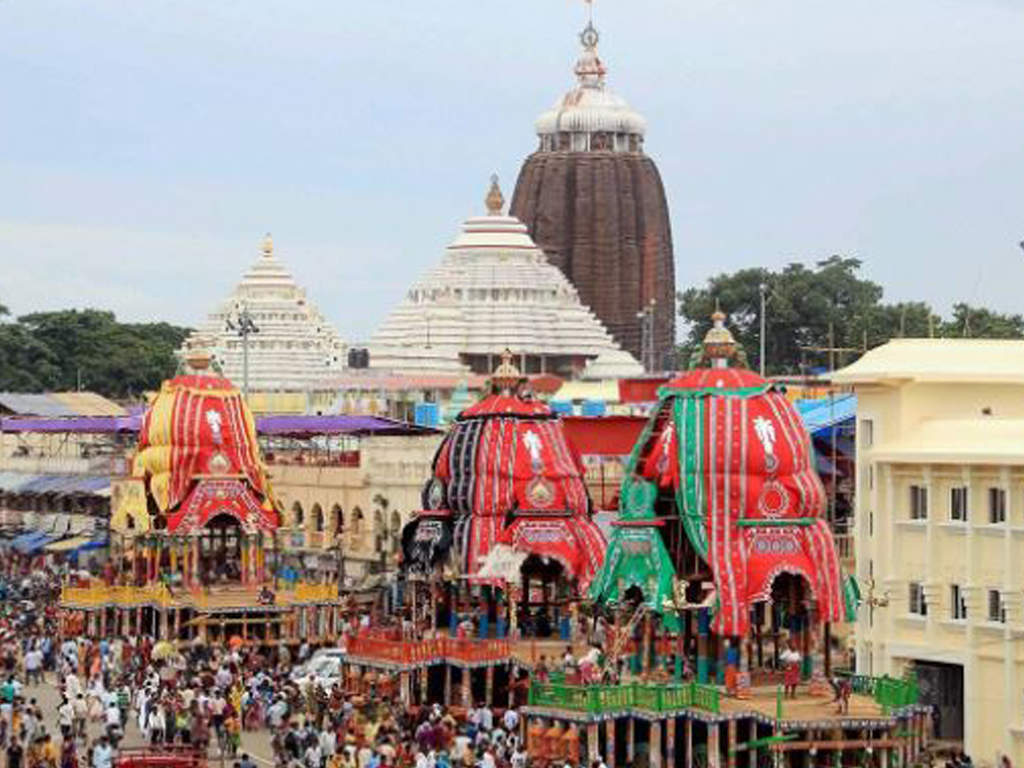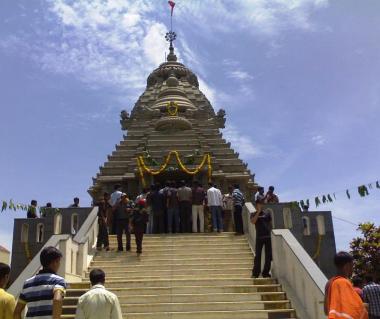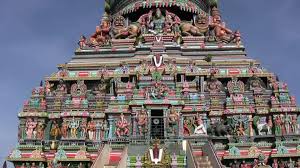Main God:
Sri Jagannath Swamy

Location:
Kannathur Reddykuppam (ECR)
Kovalam Post,
Chennai – Tamilnadu, Pin – 603112
India
Festivals:
Dola Yatra
This is Celebrated from the tenth day of the bright fortnight of Falguna up to the full moon day. The representative deities Dologobinda, Bhudevi and Sreedevi are taken in a procession to Dolabedi located outside the outer compound wall of the main Temple and special rites are performed.
Chandan Yatra
This Takes place in the month of Vaisaksha and continues for long 42 days. But, generally speaking it is a Festival of first 21 days only. The first period of 21 days is known as “Bahar Chandan”or outer Chandan. During this period, the representative images of Rama,Krushna, Madanmohan,Sridevi and Bhudevi are taken in a procession to Narendra tank.The images of Siva from 5 Siva Temples known as “Pancha Pandavas” also accompany them to the Narendra tank, At Narendra tank the images play in well decorated boats and are worshipped. The second period of 21 days known as “Bhitar Chandana” is celebrated inside the Temple. The rites observed on this period are not popularly .

Ratha Yatra (Chariot Festival)
The most splendid of the innumerable festivals celebrated round the year in the holy city of Puri, the Ratha Yatra is the grand culmination of a series of celebrations spread over the summer and the monsoon months.
Akshaya Trutiya tithi marks the beginning of the construction of the Rathas (chariots) for the ceremonial journey and sojourn of Lord Jagannath, Balabhadra and Subhadra at the Gundicha Temple for a week.
On the full-moon day of the month of Jyestha (May-June) in the Snana Yatra, the Bathing Festival, when the three deities move in colourful processions to a platform in the outer enclosure of the temple, the Snana Vedi, the bathing platform, where they bath with one hundred and eight pitchers of perfumed water drawn from a temple well once a year. After the ritual bath, the deities assume the special elephant form, recalling the legend of the Lord’s affection for a devotee, whom He proved that he was in fact another manifestation of Lord Ganesha.

At the end of the Snana Yatra day, the holy triad,supposedly afflicted with fever, do not return to their pedestal in the sanctum.they stay away from the public view for a period of fifteen days, called Anasara, after which they appear in their Navayauvana Vesha, literally a renewed youth, on the new moon day of the Month of Ashadha.During this fortnight the icons get a fresh coat of painting which gets washed out on the day of the Bathing Festival. During this period the deities eat only fruits other restricted diet and soft drinks.Cloth paintings. representing the deities called Anasara Pati, are displayed beyond the enclosures hiding the deities from the devotees to see and worship.
Finally comes the Ratha Yatra on the second day of the bright fortnight of the month of Ashadha, when the three deities come out of the temple in a specacular procession called Pahandi. The deities, which are colossal wooden statues, adorned with giant floral crowns, called Tahias, are literally pulled, pushed and dragged in rhythmic movement to the accompaniment of the beat of cymbals, drums and chanting of their names in chorus by devotees in frenzied ecstasy. After all the deities are seated in their respective chariots starts the Chhera Pamhara, the ritual of sweeping of the chariots with a golden broom by the Gajapati King of Puri,the foremost servant of God,the Adya sevaka of Lord Jagannath. The King comes from his palace on a richly decorated palanquin. Chhera Pamhara is a symbolic rite which proclaims that the King, like others, is but an humble servant of the real sovereign, Lord Jagannath.

The most exciting part of the Rath yatra is the pulling of chariots by thousands of people who lay their hands on the sturdy ropes and drag the massive structures along the Bada-Danda,the grand road. The chariot of Balabhadra moves first, followed by those of Subhadra and Jagannath. The chariots grind forward slowly until they reach the Gundicha temple and the three deities rest for a night at the entrance on their own chariots. They enter the Gundicha temple on the next day in the usual Pahandi style and stay there for seven days.
Godess Laxmi,who gets angry for being left out at the temple, proceeds to the Gundicha temple to meet her Lord, Jagannath , on the Hera Panchami day,the fifth day of the fortnight. After having a stealthy look at her Lord, she returns to the temple, damaging a part of Jagannath’s chariot in anger and disgust.
The deities, after the seven-day stay at Gundicha Temple, their garden house, commence their return journey. It is called Bahuda Yatra held on the tenth day of bright fortnight of Ashadha. The return of the chariots takes place in the same order as in the Rath Yatra. Balabhadra’s chariot moves first,followed by those of Subhadra and Jagannath. On his way back,Jagannath stops for a while at Ardhasani temple, popularly called Mausi Ma temple or the temple of Aunt. He accepts from the aunt His favourite rice cake,Poda Pitha. The three chariots pulled by thousands of devotees, reach back the Simhadwara in the late afternoon of the Bahuda day and the deities remain seated on their chariots. On the next day known as the Bada Ekadasi,the three deities, are attired in costumes of glittering gold and are worshipped by thousands of devotees. This form of the deities is known as the famous Suna Vesa. On the Dwadasi day, the three deities go back to their original place,the Ratna Simhasana, literally the jewelled platform, with the usual fanfare and the Pahandi style.Their arrival into the Sanctum sanctorum marks the end of the Ratha Yatra the grand festival of chariots.
Worship Timings:
Opening timings for jagannath temple
5:00 PM – 9:00 PM
The temple was consecrated on 26 January 2001. The shrine is a replica of the Jagannath tempe at puri and is built in Oriya style. The idols of deities at the shrine are made of neem wood, similar to those at the Puri shrine. The shrine is built of black granite originating from kanchepuram and white marble from Rajasthan. The landscaping around the temple complex covers an area of one acre. The flowers grown in the garden alone are used for the pooja, which is conducted in Oriya style. The priests at the shrine too are from Orissa

Other sannidhis (sanctum) at the shrine include those of Yoganarasiha, Shiva, Ganesha, Devi Gajalakshmi, and Devi Vimala, in addition to a Navagraha sannidhi (sanctum meant for the nine planets). The entrance to the main shrine has a huge
The most important festival at the shrine is the rath yatra, which is celebrated on the same day as in Puri. The primary deities of the shrine, namely, Lord Jagannath, Devi Subadra and Lord Balabadra, are taken around the Kannathur village during the occasion. Unlike Puri, the rath is a single one made of stainless steel and decorated with wood and cloth. It is claimed that the shrine is the only temple in the world to have a stainless steel rath for Lord Jagannath.
The temple also has Pata Chitra paintings on the walls and ceilings, similar to Oriya temples, including the depiction



